Chinese Printing
Both papermaking and printing were invented in China. Rubbings were the first form
of printing on paper. Important decrees, texts, scriptures, poems, and pictures
were inscribed on wood, bronze, and stone, then copies were made on paper for
distribution.
|
The technique for making rubbings at the Forest of Stelae
Museum in Xian has not changed much over the centuries. |
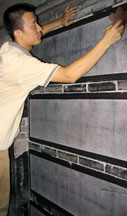 |
 |
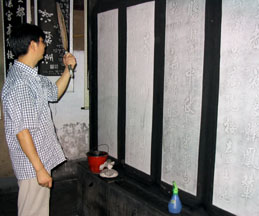 |
| Damp paper is smoothed with a brush. |
Paper is carefully coaxed into the depressions. |
The paper is dried with a fan. |
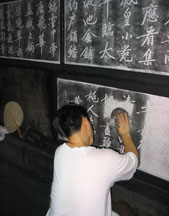 |
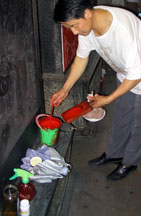 |
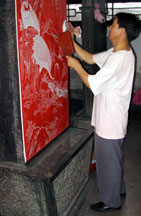 |
Ink is applied to the paper. |
Ink is recharged onto a palette. |
After the surface has been thoroughly inked, the paper
is peeled off the stone. |
|
Wood, bone, horn, stone, and metal seals have been used in
China for over 3,000 years. |
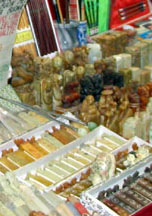 |
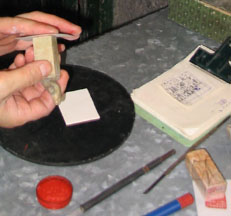 |
 |
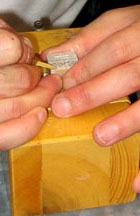 |
| Seals of many shapes and sizes can
be personalized in a few minutes. |
The surface to be engraved is sanded. |
It is placed in a vice, then the image is drawn onto the stone with a pencil. |
The pencil lines or background are then engraved with a sharp
metal tool. |
LINKS:
Dunzi Production in Yaoli, China
Porcelain Production in Jingdezhen, China
Cloisonne enameling of China
Hand Papermaking in Mexico
Hand Printing in Mexico
Japanese Washi (Papermaking)
Offset Lithography
Web page, photographs, and text by Carol Ventura in 2005. Please look at
Carol's home page to see more about crafts around the world.












